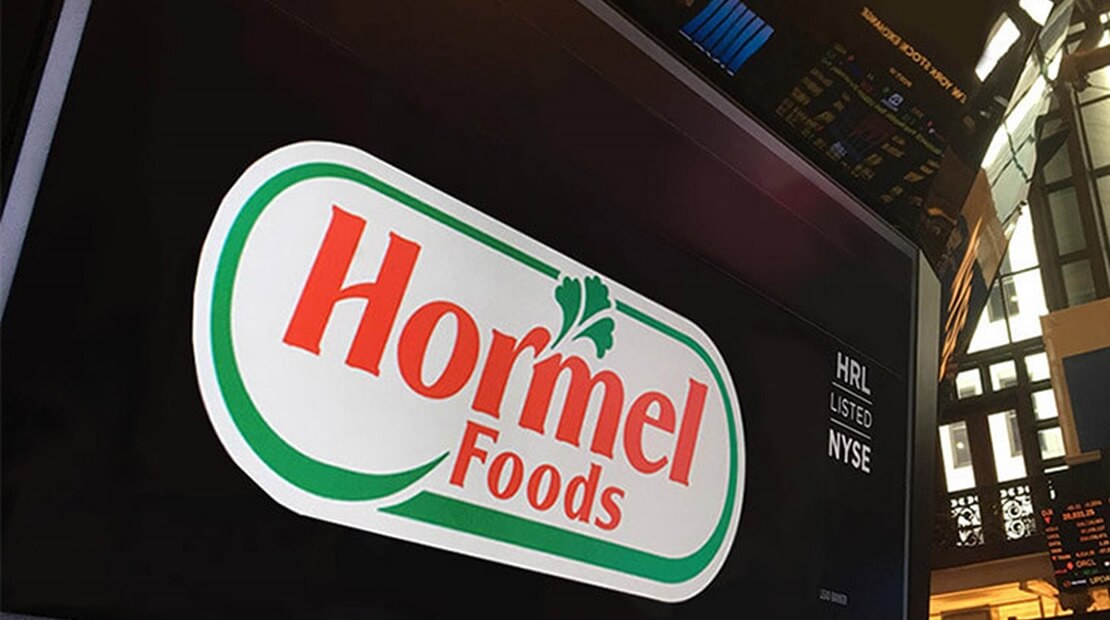Company
Minneapolis Star Tribune Covers Hormel Foods Evolution

Star Tribune
Hormel Foods is overhauling its internal operations to give a more focused boost to its brands and achieve some lofty growth targets.
“Hormel is a distinctly different company than it was a decade ago — we’ve changed the narrative in how we think about ourselves,” Chief Executive Jim Snee said in an interview. “Nothing is broken, this is just a way to make things better.”
The Austin, Minn.-based company is moving from four to three business segments — retail, food service and international — at the start of its next fiscal year this fall.
With the addition of Skippy peanut butter and Planters over the past decade, Hormel has moved from a meatcentric enterprise to what it calls a “global branded food company.”
As a result, the old operating model, which categorized products across refrigerated foods, grocery, Jennie-O Turkey Store and international/other, no longer matches the expanded footprint.
“We used to segment food based on the temperature of the product,” Snee said. “That’s not necessarily how customers and consumers are thinking about us and our products.”
Jennie-O will be split between retail and food service, but company leaders reiterated their support for the billion-dollar brand. The brand’s headquarters will remain in Willmar, Minn.
“Turkey as a protein and Jennie-O as a brand are every bit as important to our organization as they’ve ever been,” Snee said. “This is going to accelerate the growth of that business.”
The streamlining will reduce instances of multiple sales teams calling the same customer. It also creates a Brand Fuel division to help employees become “highly specialized” as opposed to a “jack of all trades,” said Deanna Brady, the company’s executive vice president who will lead the retail group.
“This allows experts in brands to spend their entire day thinking about growing their brands,” she said.
Hormel’s 20,000 global employees were informed of the changes last week during a virtual town hall meeting. Snee said the biggest impact to jobs would be “where their chair may shift.”
All told, the reorganization represents a major “evolution” for the 131-year-old company, as Snee puts it.
“We’re a $12 billion company, this isn’t your grandfather’s Hormel Foods,” he said. “We’ve got to make sure we’re not slowing down because we’re getting bigger.”
Retail unit will focus on store shelves
The company’s biggest segment will see the biggest impact. Retail will be reorganized into six verticals to better reflect how the products will be pitched to retailers and what consumer problems they solve.
“We’re thinking about how our consumers think of us,” Brady said.
Convenient meals and proteins will include Skippy, Spam, Dinty Moore and Lloyd’s Barbecue, while snacking and entertaining will encompass Planters, Columbus Craft Meats and others. Global foods includes Wholly Guacamole and Herdez.
Value-added meats include Jennie-O and Hormel brand pork. Bacon, meanwhile, will get its own category, as its “popularity is at an all-time high,” Brady said.
The final part of the retail group will be emerging brands.
“Retail is clearly going to be the most impacted part of our business in a really positive way, and we don’t take it lightly,” Snee said. “We’ve got some aggressive growth numbers out there, so to hit those we want to have the right model supporting it.”
Hormel intends to grow its earnings per share as much as 18% compared to last year. The company expects to bring in $11.7 billion to $12.5 billion in revenue for the fiscal year, which ends Oct. 31. It had a record $11.4 billion in revenue last year.
Food service hitting cafeterias, restaurants
The company’s food service operation has come a long way from pitching retail packs of bacon to restaurant operators decades ago.
“Labor-saving items and value-add, that’s where we play best,” said Mark Ourada, who will head the food service group. Bacon and pepperoni especially remain staples of Hormel’s offerings for restaurants and institutions.
The biggest change for this segment, which is seen as vital for continued growth, is bringing different parts of the business under one umbrella.
“We might have had two or three different people calling on one customer, which can cause confusion for the operator and internally,” Ourada said. “This breaks down barriers to how do we best get to those customers.”
Jennie-O has seen big success at K-12 schools, while other Hormel brands have more experience in college cafeterias. Bringing the two together under food service unlocks “big growth opportunities,” Ourada said.
International will have ‘aggressive’ goals
Snee said the company’s global presence remains “aspirational,” but the company is doubling down on “aggressive” international growth to drive sales.
Giving international its own segment shows how much effort Hormel intends to put toward its growing geographic footprint.
“We’re really spoiled for opportunity,” said Swen Neufeldt, who will continue to head the international division, which recently opened an Asia-Pacific research and development center.
Hormel International is active through East Asia and Oceania and has “end-to-end” operations in China and Brazil. It recently struck a deal to get Spam rice balls in FamilyMart’s 16,000 convenience stores in Japan, Neufeldt said.
The reorganization gives the international unit the “holistic support” of the entire Hormel operation, he said.
“This is really all about the food, keeping our brands incredibly strong, and about us becoming more global,” Snee said. “This operating model sets us up for what the future of Hormel Foods is going to be.”